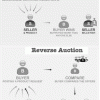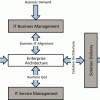Strategic advice to leverage new technologies
Technology is at the heart of nearly every enterprise, enabling new business models and strategies, and serving as the catalyst to industry convergence. Leveraging the right technology can improve business outcomes, providing intelligence and insights that help you make more informed and accurate decisions. From finding patterns in data through data science, to curating relevant insights with data analytics, to the predictive abilities and innumerable applications of AI, to solving challenging business problems with ML, NLP, and knowledge graphs, technology has brought decision-making to a more intelligent level. Keep pace with the technology trends, opportunities, applications, and real-world use cases that will move your organization closer to its transformation and business goals.
Recently Published
While making predictions for the new year last December, I said that it would become more practical for end-user organizations to take advantage of social BI in 2010, because BI vendors would increase their efforts to add to their platforms social media, such as blogs, wikis, social networking, BI search, and mashups.1
Municipal government, at the city, township, and village level, is a foundation for day-to-day living. Local elected officials, city administration and staff, and volunteer boards and committees provide the services that figuratively and literally pave the environment in which residents live, work, and play.
Today governments at all levels in the US, and indeed around the world, are dealing with declining revenues and increasing costs across the board. Thus, government executives are challenged each day to do more with less -- or as Ashton B.
Toward a New EA Model: Designing an EA Organization Reference Model
Does your organization possess a reference model for EA that goes beyond the tired, old organization chart? Traditionally, most models of EA organization have been predicated on the view of IT as a support function, as reflected in the ubiquitous organization chart showing "Architecture," in one form or another, usually either reporting to the CIO or CTO.
In my work as an agile coach, I find many teams applying agile techniques are puzzled about how to slice epic requirements into user stories. In Planning Extreme Programming, Kent Beck and Martin Fowler define stories simply:














